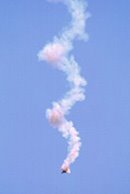Without question the best book I've read about human factors engineering and the issues that arise when we put human beings and technology together is The Human Factor: Revolutionizing the Way We Live With Technology by Kim Vicente. Vicente has written a very readable and fascinating book drawing on real life experiences from the aviation, nuclear, health care and other high risk industries. The book is organized around the "Human-Tech Ladder" which describes a hierarchy of relationships that explains why things sometimes go wrong when humans and technology mix. The ladder looks at the following factors:
Physical - Size, shape, location weight, colour, material
Psychological - Information content/structure, cause/effect relations
Team - Authority, communications patterns, responsibilities
Organizational - Corporate culture, reward structures, staffing levels
Political - Policy agenda, budget allocations, laws, regulations
The book demonstrates that IT failure can rarely be attributed to a simple technology failure or by the failure of a single human being. The extraordinary complexity of the surrounding technological and human systems together with this hierarchy of human-technology relationships is often at the root cause of failure.
I highly recommend this book for anyone building, installing or operating eHealth systems.
Wednesday, August 8, 2007
Subscribe to:
Post Comments (Atom)


1 comment:
Having run a consulting company that focused on human factors, I like to differentiate between "usefulness", "usability" and "utility", where usefulness is a combination of usability and utility. We often talk about usability but forget that a system can be easy to learn, easy to use, etc but offer very little utility. Conversely, a system can be difficult to use but offer such high utility that we are more than willing to put up with the poor usability.
When I was learning to fly many years ago, we were taught how to use Loran-C (a predecessor to GPS). It was not exactly user-friendly. However, living in Nova Scotia at the time, I discovered that most fishermen, many with a basic high school education, successfully used Loran-C. Why? Because knowing where they were when at sea offered incredible utility and more than justified the investment needed to learn how to use it.
I think that measuring the "usefulness" of a system is more important than measuring its "usability". Usefulness takes into consideration the balance between usability and utility. Adding cost into the equation offers an extremely valuable perspective into system design that allows intelligent tradeoffs to be made.
Michael Martineau
eHealth Practice Lead
Branham Group Inc.
Post a Comment